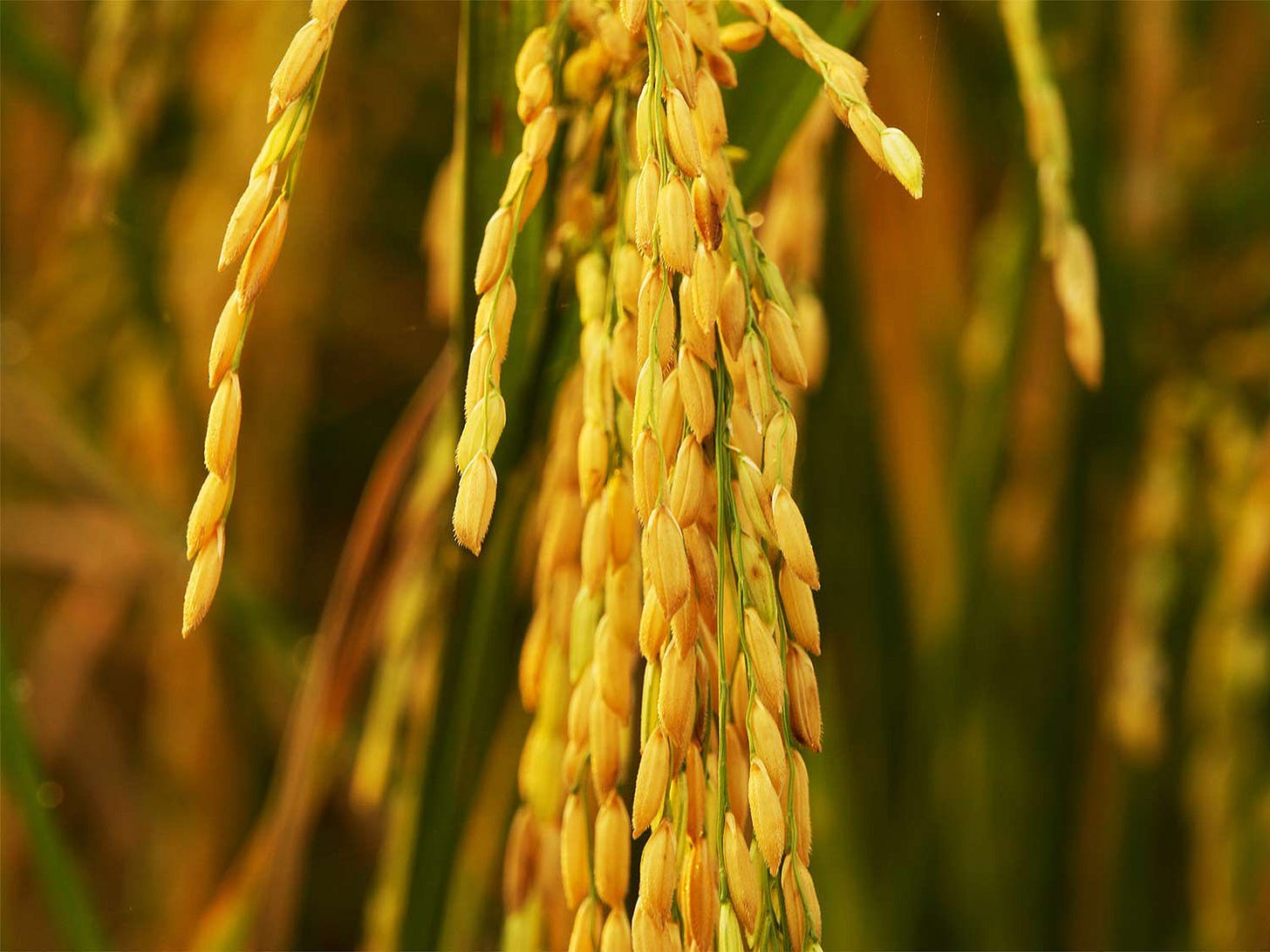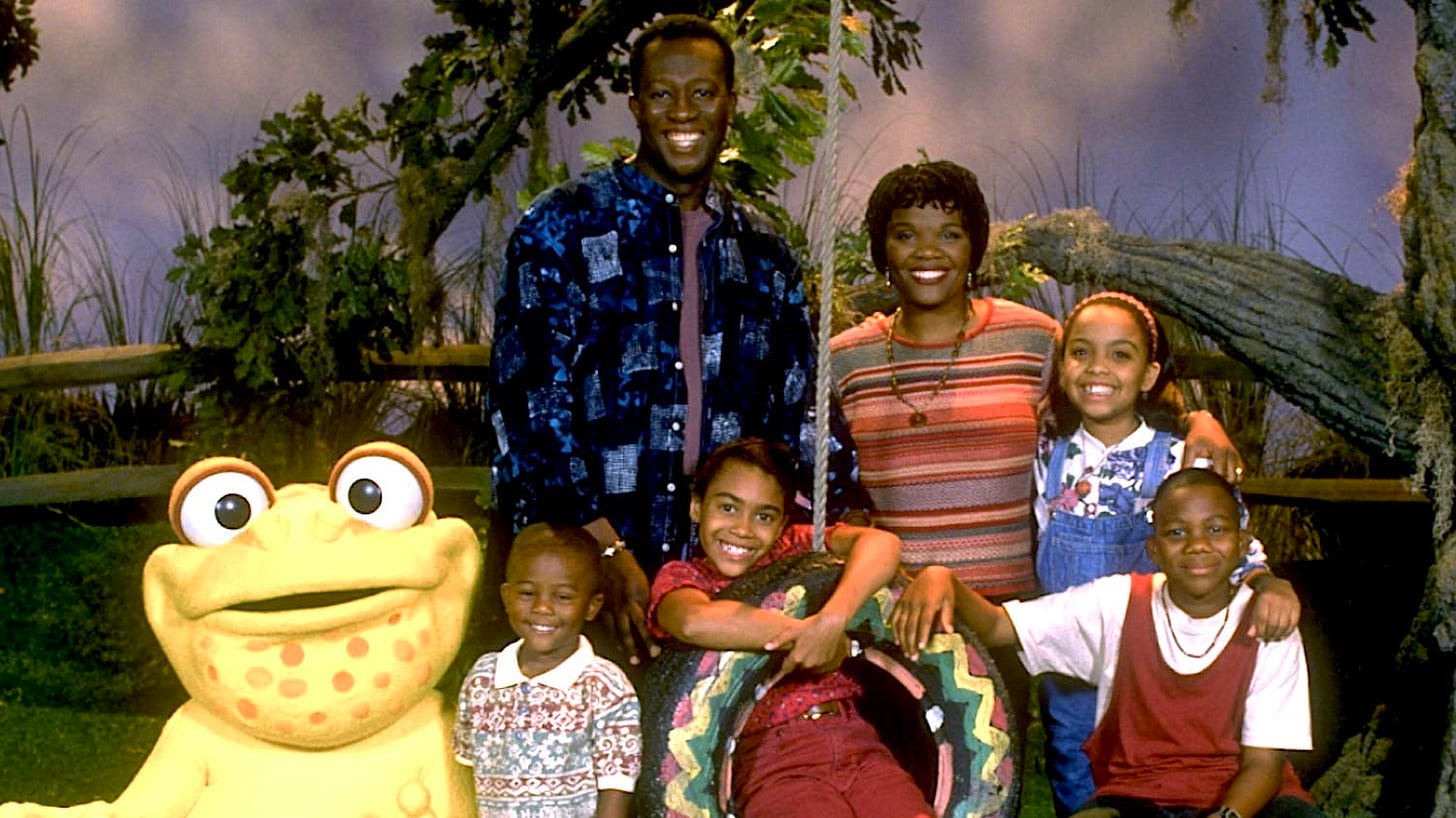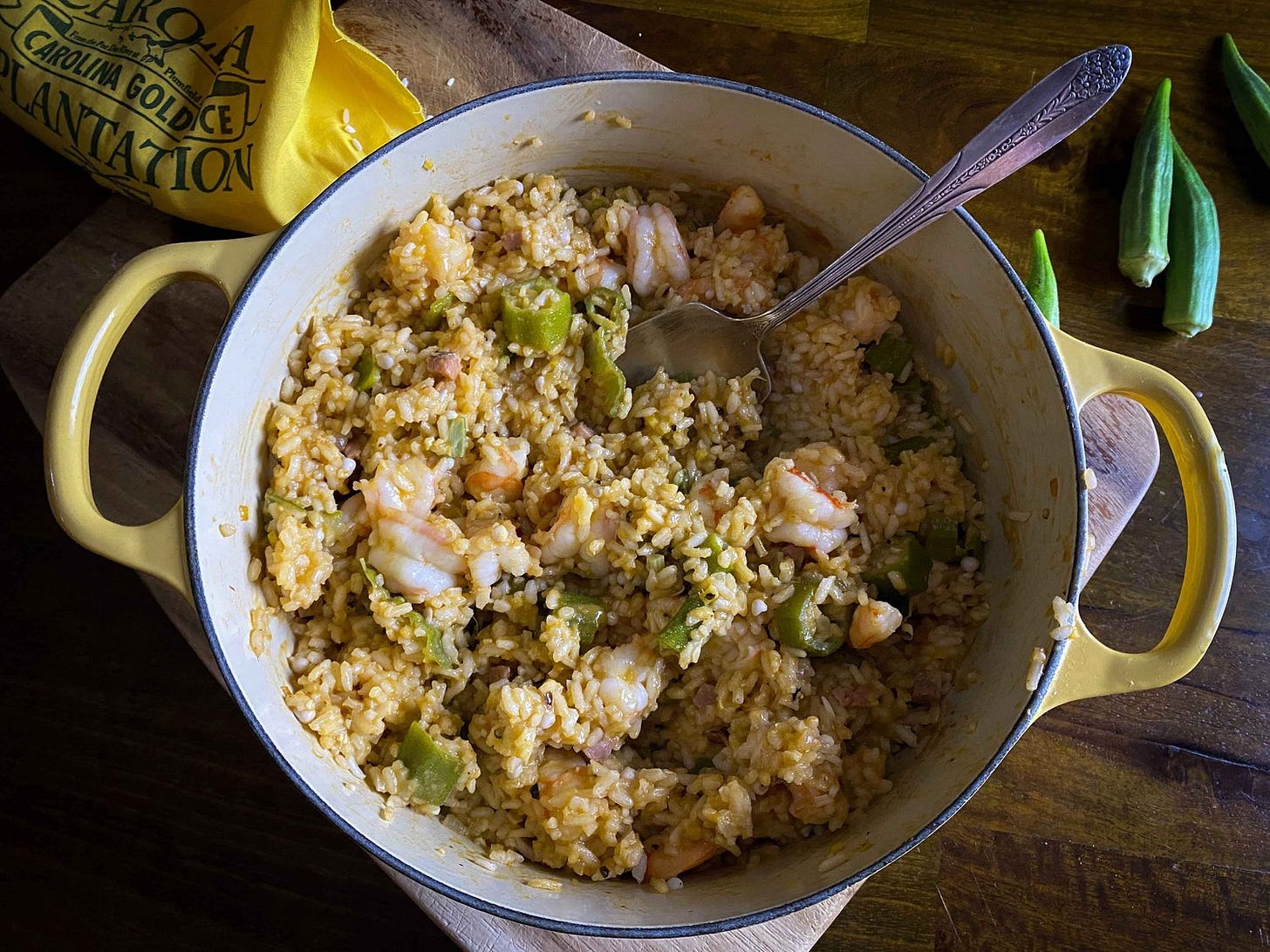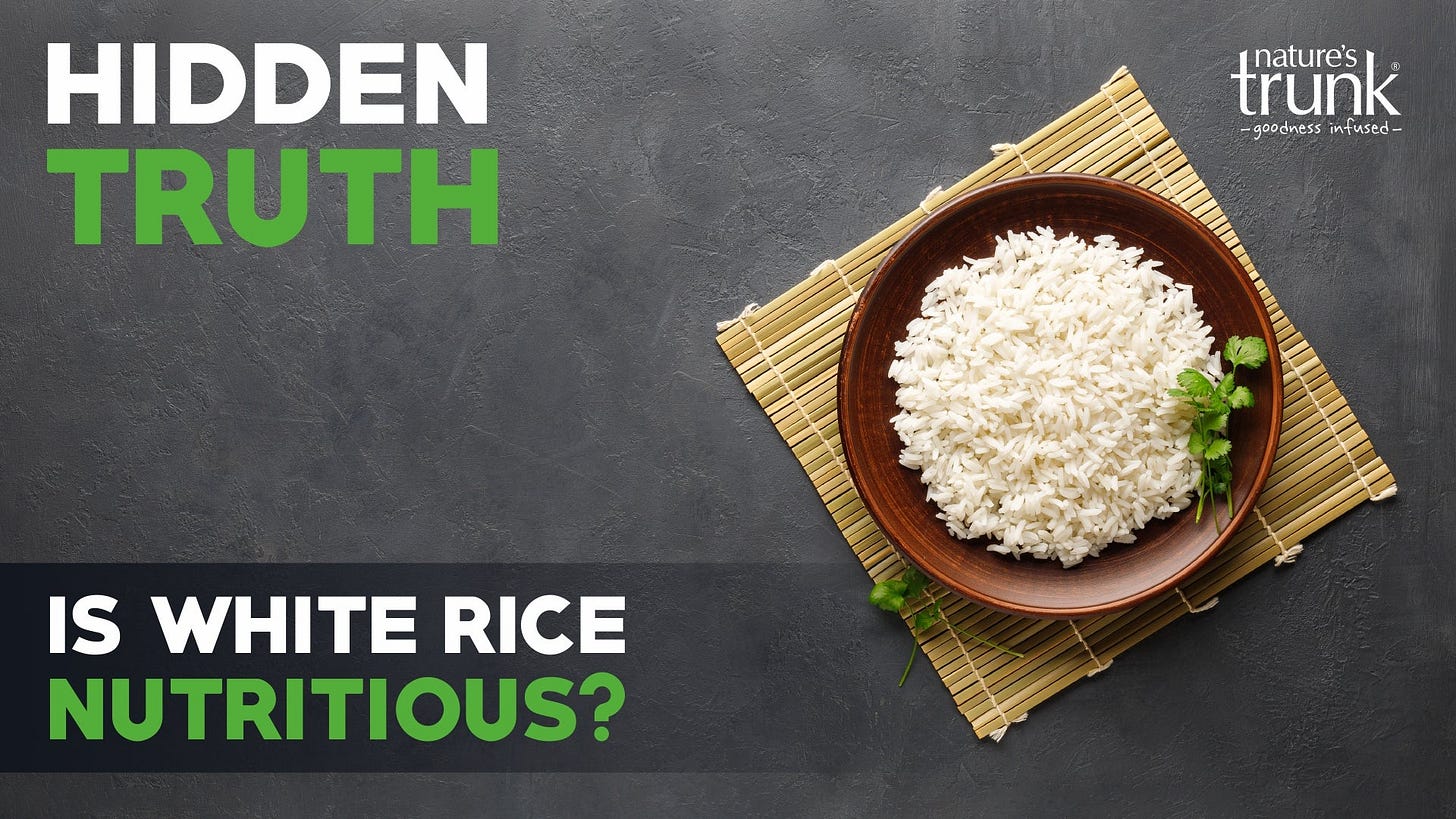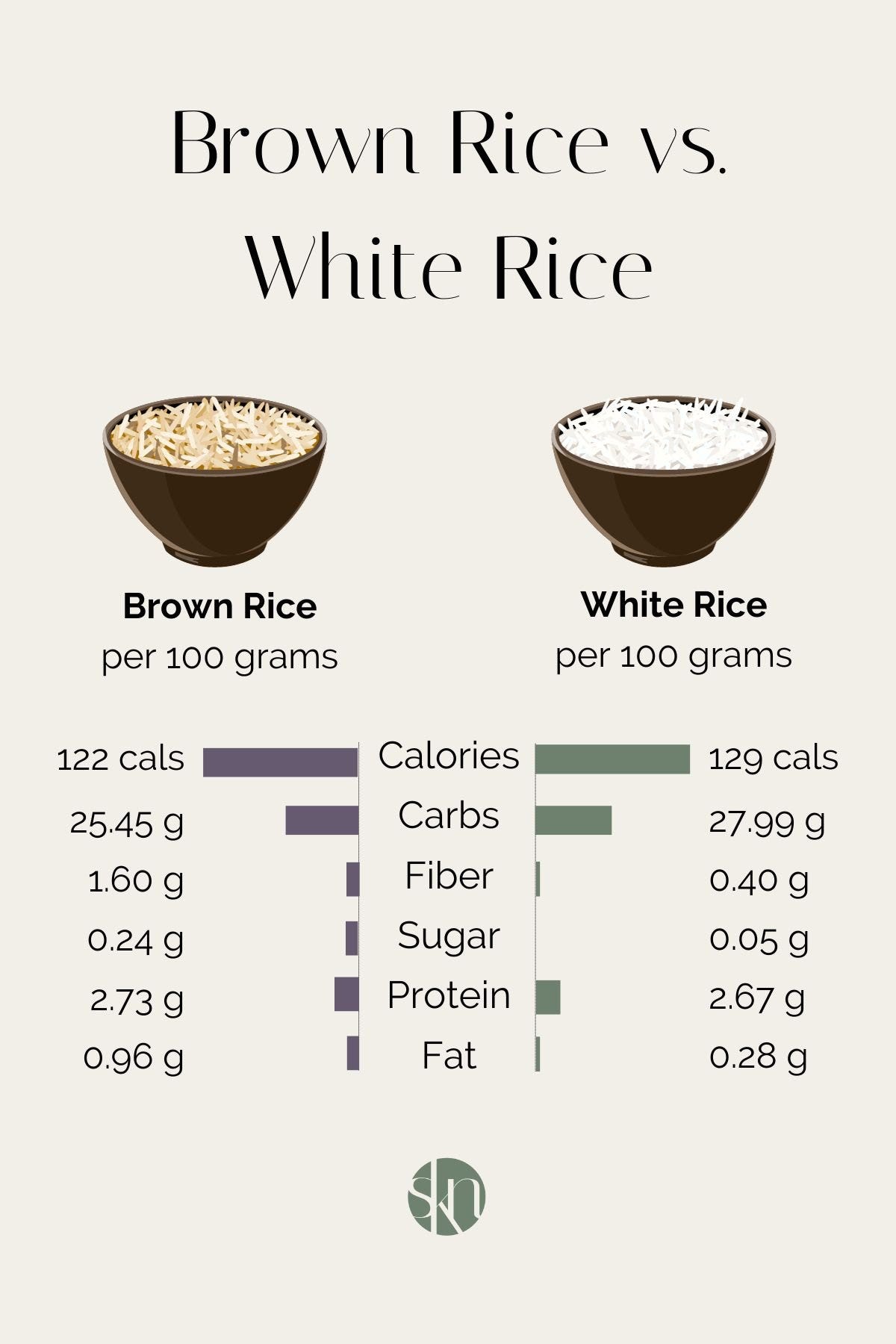"We're White Rice People" The Beauty and History of Carolina Gold Rice
An exploration into Carolina Gold Rice, the Gullah Geechee, and What We Can Learn From The People That Came Before Us
“Lauren, we are white rice people.”
This is a phrase my mother would say every big family dinner growing up. We ate rice with any meal that offered the opportunity.
Sometimes rice by itself, sometimes rice with butter, sometimes rice with soy sauce, occasionally just butter.
It had a permanent residency in our cabinets, and I’m sure if I went to my parents’ home right now, I’d find no less than 3 bags of basmati white rice from Costco in their pantry.
I never gave much thought to it, but rice always remained apart of my staple diet. No matter what, I, too, kept a bag of white rice handy.
It was my saving grace in my early IBS days, it went with every meal I knew how to make in my early 20s and it just so happened to be filling, affordable, and accessible everywhere.
But WHY were we rice people? I never questioned, I just innately understood.
And then came diet culture. Around the time I was a teenager, white rice started to get a bad rep. Everyone was shifting to brown rice or quinoa, white rice became the enemy, the fattener, the bad guy. None of this was new, but it was knew to my young and impressionable brain.
But why? If everyone eats it, how could it be bad?
Most cultures around the world utilize rice in some way, white rice especially. It felt pointed. This food I had been eating since I could eat solids was suddenly unhealthy….diet culture… is that you?
28 years later, and I am now putting all the pieces together. And I believe it may have roots in the Gullah Geechee of the Carolinas, or at least I have a hunch.
Bloodlines and Carolina Gold Rice
My mother’s family all hail from the Carolinas, specifically Western North Carolina. My grandmother, her parents, and their parents were born there, slowly moving up to Virginia within the 1940s-1960s, and eventually settling in Maryland. But like many Black residents of the DMV region, we all have roots in the Carolinas somewhere (it was a running joke growing up that everyone has a cousin in North Carolina).
Both North and South Carolina are made up of differing landscapes that range from the coastal beaches to the central plateaus all the way up to Appalachian Mountains out west.
Vast, diverse, and wildly underrated.
I grew up driving through the Carolinas to get to Myrtle Beach, a long 8 hour drive fueled by BBQ and the installed DVD player in my dad’s truck.
What I didn’t realize as a child was the history of the Carolinas, and the immense culture there. Now at 8 years old, I wouldn’t expect myself to be an expert, but the older I get, the more I see the deep context in which I live, and it’s influence on my culture but also the food I eat.
(I did NOT just fall out of a coconut tree!)
Carolina Gold Rice and the Gullah Geechee
Carolina Gold Rice, aka Carolina Gold, is a type of rice that can only be considered authentic when grown in the Carolinas. This one crop changed the southern economy.
I would guess that most people when they consider cash crops farmed during slavery, they consider cotton, maybe sugar cane, but rarely have I heard people mention rice.
The grain itself thrives in the coastal Carolinian climate, and so it became the crop of choice for the region. Even being deemed “gold” as a way to emphasize it’s money making potential.
The swamp-like humid conditions of places like Eagles Island in North Carolina made the perfect landscape for rice cultivation and made way for innovations of the Gullah Geechee come into play.
The Carolinas were slave states in the pre-Civil War United States, with the numbers of enslaved as of 1860, totaling to almost 800,000.
(that is more than the entire state of Wyoming presently).
These people, who were ripped from their culture, and their ancestral lands, developed their own culture and way of life, despite the pain and trauma of slavery, and developed amazing technological advances for rice cultivation.
The ancestors of the modern day Gullah Geechee people were chosen for this exact reason. Western Africa, also described as the rice coast, had similar landscapes and climate, making the people of the region an ideal target for slave traders headed to the Carolinas. Further demonstrating how even without acknowledgment, it was known and understood that the work of rice cultivation was SKILLED labor that required a deep understanding of nature, science, and engineering.
Innovations created by the Gullah Geechee like irrigation systems were used to control water flow with dams and levees, which have been found in present day Eagles Island. The practices developed required skill, precision, and talent, a recognition and sentiment that the enslaved were not afforded at the time and often still aren’t.
One of the most interesting facts that I have learned from writing this was how these same conditions for rice farming, which often led to isolation and an environment wrought with mosquitoes and dampness, also led to a more attuned preservation of West African traditions.
We know of the steep cultural traditions of the Gullah Geechee today because of this preservation. The traditions have been featured in T.V. shows like Gullah Gullah Island, High on the Hog, and Chef’s Table.
Rice, The “American” Diet, and The Myth of “Unhealthy” White Rice
Carolina Gold was the first American rice grown commercially, and yet has faded into mild obscurity if you’re not a culinary nerd or from the Carolinas. What I find fascinating is how the traditions still deeply live on, even if people don’t know the origins.
Did you really think the idea of the one-pot, one-meal came from the NY Times Cooking page?
Rice-based dishes like Purloo and Pot Meat demonstrate the origins of American* cuisine. These meals featured ingredients that were common to the region like seafood, okra, and meats or meat scraps that could be cooked quickly, feed many, and were affordable.
*The idea of American cuisine is complex and not often well-defined. Many people say that there is no true American cuisine, which I find to be lazy and quite ignorant. To erase “American” cuisine is to also erase the vast and expansive history of Indigenous American cuisine and ignore the cultural contributions of those forcibly brought to the Americas who made amazing culinary dishes and invented cuisines known and revered around the world.
We celebrate and uplift dishes like Paella, Orzo, Stir Fries, Risotto, and a myriad of other rice/grain based pot meals, but yet, we have our own version right here from the heart of the Carolinas.
This is not a condemnation of other cultures’ cuisines, they are fantastic, and some of my favorite dishes to order out. I just wish the same admiration was given to the traditional cuisines of Southern Black people, who’s culinary creations informed an entire range of modern day American meals.
Diet Culture and the Demonization of White Rice
Ads like the one above often make me giggle, but that’s been after a life long journey to get over the internal diet culture bully telling me that white rice was bad for me.
Let’s be clear, white rice, like any other grain has very clear benefits for us.
It’s an essential nutrient: Carbohydrates. The kind that our brain runs off of.
Easier to digest than other grains.
Often enriched with vitamins and iron.
It also just tastes good….
I’m not here to make you only eat white rice, and I would not lie and say that brown rice does not have equal benefits, and higher fiber than white rice, but white rice is not the real enemy here. Diet culture is.
Almost any food can be okay in moderation and succumbing to the idea that white rice is bad for you, also can lead to an abandonment of many of our cultural traditions.
As I stated, I am white rice person, my family are white rice people, it is deeply engrained in us, in our ancestry, in our cuisine, it is who we are.
To abandon white rice is to abandon the beauty of the cultural traditions of those that came before me. And that demonization is not mine, it is diet culture’s.
Brown Rice vs. White Rice
The differences between brown rice and white rice are marginal, with white rice barely edging over in calories, and brown rice only a gram or two more rich in fiber than white rice.
The difference is not as intense as diet culture would have you believe. So eat your white rice, eat it with pride, and excitement and admiration. Eat it without shame.
What We Can Learn From This:
As the saying goes, if we do not learn from the past, we are doomed to repeat it. I think we could also add, if we do not learn from the past, we’ll never appreciate it.
Much like many Indigenous peoples’ have stated for as long as this land has been colonized, the people that came before us were intelligent, knowledgeable and knew how to take care of the land, without further harming it.
The Gullah Geechee were already doing innovative, creative, and sustainable practices in the coastal Carolinas, a region that is now subject to massive climate change impacts and coastal erosion.
What could be learned from their rice cultivation practices? What could be understood by paying respect to the work they have already put in? How can we study their use of land resources and learn from it?
As climate change continues to change the way we live, and the way we farm, perhaps it would be worth it to go back and retrace some steps, see where we can learn, and give credit where credit is due.
Sources:
https://www.scseagrant.org/carolinas-gold-coast-the-culture-of-rice-and-slavery/
https://www.theguardian.com/news/2024/dec/21/gullah-geechee-rice-fields-north-carolina
https://projects.sare.org/project-reports/ls21-355/
https://www.geecheekunda.com/land-and-agriculture-sustainable-practices-in-geechee-gullah-communities/
https://faculty.weber.edu/kmackay/statistics_on_slavery.htm
https://www.carolimas.com/what-gullah-geechee-culture-has-contributed-to-the-american-diet?srsltid=AfmBOoom2IMx04R1vIG45bDj7zBZ1l6r4b415XjdR2FQ82QyjCEeCS0J
https://www.seriouseats.com/carolina-gold-heirloom-rice-anson-mills




